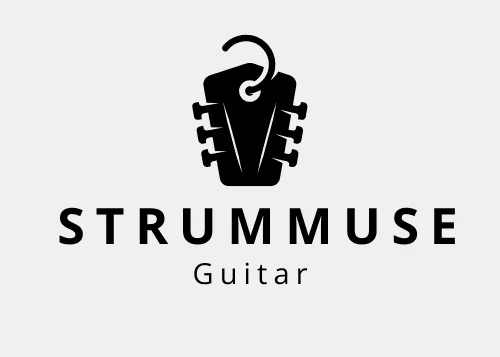Introduction: East Meets Strings
Improvisation is at the heart of musical expression. Whether it’s a blistering blues solo or a mellow jazz line, improvising lets a guitarist speak directly through their instrument. But what happens when you step outside the Western box? What if you dipped into one of the richest, oldest musical traditions in the world—Indian classical music?
This blog explores exactly that: how to integrate Indian classical scales (Ragas) into your guitar improvisation. This isn’t just about learning a few exotic-sounding phrases. It’s about adopting an entirely new musical lens. The beauty of Indian classical music lies in its emotive depth, fluidity, and spiritual resonance. Integrating this into your guitar playing can elevate your improvisation to something truly unique and moving.
We’ll cover foundational knowledge, scale examples, fretboard application, phrasing, and more. Whether you’re a blues shredder, a jazz purist, or a fingerstyle folk artist—there’s a raga for you.
1. What Is a Raga? A Brief Primer
A raga (pronounced “raag”) is more than just a scale. It’s a melodic framework used in Indian classical music, encompassing not only specific notes but also rules for ascending and descending patterns, emotional color, and characteristic phrases (called pakad).
Each raga is designed to evoke a particular mood or emotion (called rasa), and many are associated with specific times of day or seasons. For example:
- Raga Bhairav – Serious and devotional, traditionally played in the morning.
- Raga Yaman – Romantic and serene, played in the evening.
- Raga Desh – Joyful and patriotic, often performed during monsoon season.
The richness and expressiveness of ragas are what make them so exciting to explore on the guitar.
2. Why Integrate Indian Scales into Guitar Improvisation?
Incorporating Indian classical elements offers:
- Fresh melodic vocabulary – Get out of scale-box thinking.
- Enhanced emotional expression – Tap into deeply spiritual tones.
- Unique phrasing – Use slides, bends, and glides inspired by Indian ornamentation.
- Genre fusion – Add color to rock, ambient, jazz, or even EDM with raga elements.
For example, using Raga Kafi (similar to Dorian mode) can add a lush, modal feel to your solos without sounding overly Western.
3. Key Differences Between Ragas and Western Scales
| Feature | Ragas | Western Scales |
|---|---|---|
| Emotional Intent | Strongly defined (Rasa) | Loosely defined |
| Note Usage | Ascending ≠ Descending | Same both ways |
| Ornamentation | Essential | Optional |
| Structure | Fluid with motifs | Rigid scale patterns |
| Microtones | Often included | Rarely used |
Understanding these distinctions helps you approach ragas with the respect and flexibility they require.
4. Commonly Used Ragas for Guitarists
Here are a few beginner-friendly ragas that map well to the guitar:
- Raga Yaman – Like Lydian with a major 7th, sounds expansive.
- Raga Kafi – Close to Dorian; minor with a natural 6.
- Raga Bhairavi – Similar to Phrygian but more nuanced.
- Raga Desh – Bright and expressive.
- Raga Bageshree – Deeply romantic, great for slow improvisation.
Each of these can be translated into fretboard patterns similar to modes but with specific twists in phrasing and note emphasis.
5. Mapping Ragas onto the Guitar Fretboard
Let’s take Raga Yaman as an example (comparable to Lydian):
Notes: Sa Re Ga Ma# Pa Dha Ni Sa (C D E F# G A B C)
Map it in C:
E|-------------------------7--8--|
B|-------------------6--8--------|
G|-------------5--7--------------|
D|-------5--7--------------------|
A|--5--7-------------------------|
E|------------------------------|
Once you’re comfortable, shift to other positions and keys. Focus on smooth slides, hammer-ons, and pull-offs.
6. Practice Exercises to Build Vocabulary
- Slow Phrase Looping – Pick 3–5 notes of a raga and loop them with different rhythms and phrasing.
- Call and Response – Record yourself playing a phrase, then answer it using different parts of the fretboard.
- Microbend Studies – Practice subtle bends to mimic vocal inflections.
- Drone Practice – Use a Tanpura app or C drone to practice phrasing over a sustained tonic.
7. Phrasing and Ornamentation Techniques (Gamakas)
Phrasing in Indian classical music is incredibly expressive. Learn these techniques:
- Meend (Glide) – Long slides between notes.
- Andolan – Slow oscillation between a note and its neighboring microtone.
- Kan Swar – Grace notes played quickly.
- Khatka and Murki – Quick clusters of notes for ornamentation.
These techniques bring life to ragas and should be practiced slowly with attention to feel.
8. Improv Examples in Different Genres
- Ambient – Use Raga Yaman with delay and reverb to create ethereal textures.
- Jazz Fusion – Combine Raga Kafi with Dorian licks for modal interplay.
- Blues – Use Bhairavi for a darker, more exotic feel.
- Lo-fi / Chill – Use Raga Desh for nostalgic, uplifting vibes.
📝 Tip: Blend ragas with pentatonic scales or modal riffs to ease into the style.
9. Tools and Tunings for a More Authentic Sound
- Alternate Tunings – Try DADGAD or Open C for drone-like sustain.
- Fretless Guitar – If available, use it for better microtone control.
- Scalloped Frets – Easier to execute meend (glides).
- Slide Guitar – Mimics vocal-style ornamentation.
- Loop Pedals / Drones – Create a background for improvising.
10. External Resources and Learning Pathways
- 📚 Ali Akbar College of Music
- 🎥 YouTube: Indian Guitaroo Channel
- 🎧 Spotify Playlist: Indian Raga Guitar Fusion
- 📱 Apps: iTablaPro, Riyaz, NaadSadhana
- 📖 Book: “Raga Mala” by Ravi Shankar (for inspiration and cultural depth)
11. Author’s Note
As someone who started with blues and classic rock, discovering Indian classical music felt like opening a hidden door. My solos went from sounding like scale exercises to actual stories. The first time I tried Raga Yaman over a C major drone, I was floored by how much space and emotion those notes could carry.
This post isn’t about cultural appropriation—it’s about appreciation, learning, and respect. The world is rich with musical languages, and ragas are some of the most beautiful ways to speak. Approach them with an open heart and curious hands.
Outro
StrumMuse – Guiding guitarists to deeper musical journeys, one note at a time.

